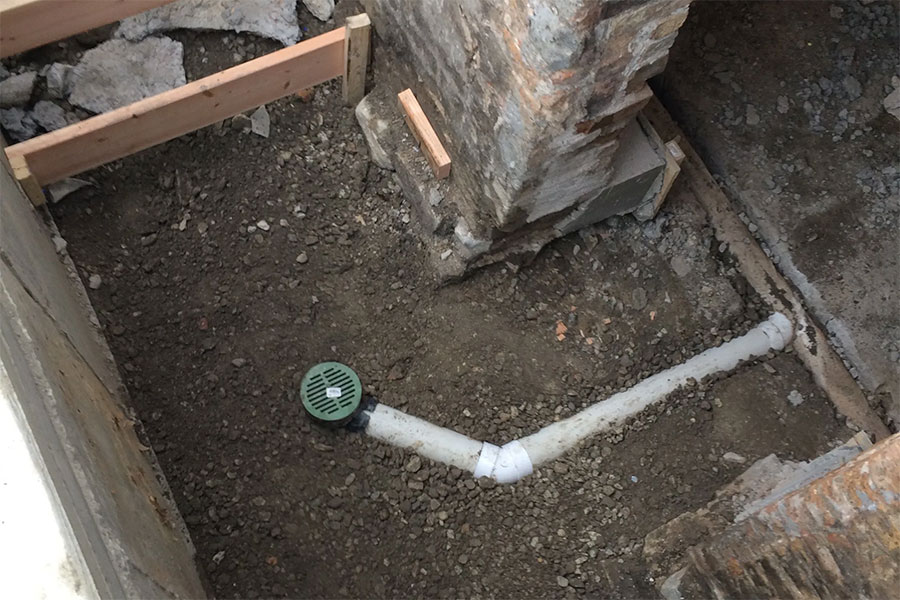There is an often forgotten about area of the home that is prone to flooding that can be disastrous if left unattended. If your home has an outdoor stairwell that leads to the basement and is subgrade (below ground level) then the bottom of that stairwell is an area of concern that should not be left unattended. Too often we have seen these stairwells turn into shallow swimming pools because they have an outdated or broken stairwell drain, or even worse, they don’t have one at all.
A stairwell drain is a system that removes water from the bottom of the stairwell. A stairwell without a drain has negative effects not only in the stairwell itself, but for the basement as a whole. Any standing water pressed against the foundation of your home is bad news. Standing water is heavier than people may think and exerts hydrostatic pressure against all surfaces it is in contact with. This hydrostatic pressure (over time) is capable of cracking concrete, creating cracks, and allowing the moisture to enter your basement.
Basement moisture is bad news, leading to a slew of health and safety issues for your home. Mold, infrastructure damage, rot, rodents and bugs, and of course, a weakened foundation. Thankfully though, when you’re in the basement solutions business, big problems are easy fixes with the proper foresight. It’s about preventing a problem before it happens. A stairwell drain is a part of the basement health ecosystem.
One solution we’ve come across is to install a drywell. How it works is this: you install a drain at the bottom of the stairwell. The drain connects to plumbing pipes which lead to a large container, normally 10-20 gallons, that is placed in a hole in the ground and surrounded by gravel. The container has holes on the sides, so that when the container fills, it filters through the gravel and is soaked up by the surrounding soil. Neat idea!
The problem we see with this system, however, is that the soil the water is soaking into once more is directly next to the foundation of the home. During heavy rainfalls, that surrounding soil may already be soaked with water. When you add more water, where does it have to go? It begins to travel to find dryer soil until it hits a wall—your foundation. So really it took the water from the stairwell and just placed it somewhere else.
A second possible hiccup is you need to have the right kind of soil around your home for this system to work. If your home is surrounded by more clay content land, then that water won’t be soaking into anything, just piling up against your foundation. This system can work for some, but we strongly recommend having a professional handle it so it is done right, if at all.
We would vouch for connecting the stairwell drain to a waterproofing system with a Pro Series sump pump. The sump pump will take the water and discharge it away from the house. How far is far enough? Really the answer is unique to each home: it’s however far it needs to travel until the yard slope causes the discharged water to travel away from the home, not toward it. For some homes it could be ten feet, for others more. It’s important to test these things before the system gets installed.
A basement waterproofing system is only as strong as its weakest link. Water always finds a way through. If your stairwell drain is damaged, outdated, or non-existent, it’s time to look into a solution. Chances are the damage has already begun.

